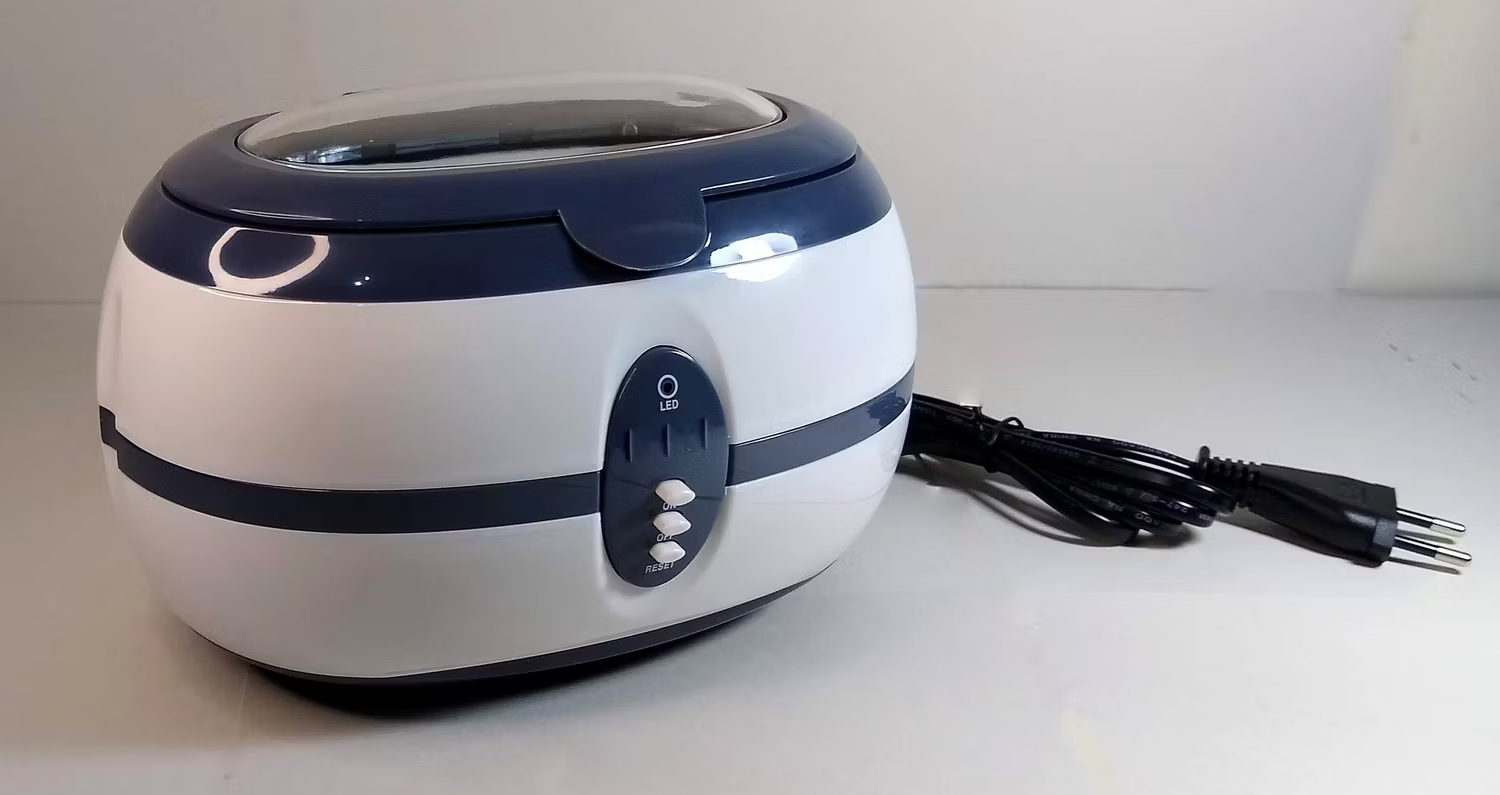
There's nothing worse than dirt that you can't get rid of. Stubborn grease, grime, and dust can ruin the objects we love, but technology is constantly developing new ways to keep our possessions clean. Enter ultrasonic cleaners. These nifty devices are capable of getting rid of all kinds of dirt, but how do they work, and can you buy one?
What Is an Ultrasonic Cleaner?

Ultrasonic cleaners (also known as ultrasonic baths) use ultrasound waves to clean objects. You may have heard the term "ultrasound" before, as it has long been used to produce images of babies from inside the womb. But that's not all they're good for.
Ultrasound waves are high-frequency waves that produce a sound that humans cannot hear. Ultrasound waves are at least 20,000 Hz (20 kHz) while maxing out at around 100,000 Hz (or 100 kHz). Most humans can only hear sounds of up to 20,000 Hz (20 kHz). But while we may not be able to hear these waves, we can still make use of them.
How Does an Ultrasonic Cleaner Work?
Ultrasonic cleaners operate using a liquid (such as water or a suitable solvent) in which an object is submerged. The cleaner then emits high-frequency waves through the liquid, agitating it. The agitation creates microscopic bubbles, which then implode when they reach a certain size in order to remove dirt. This ultrasonic cleaning process is also known as cavitation.
In an ultrasonic cleaner, waves with a frequency of around 40 kHz are used. They also have a power consumption of 50-100 watts per gallon of cleaning liquid. So, they're not exactly low-energy devices, but aren't unjustifiably wasteful, either.
Ultrasonic cleaners consist of various parts, including a tank, temperature controllers, transducers, and various modes of operation. It is the transducers that are responsible for emitting ultrasonic energy, with the tank vibrating so that this energy can be spread effectively.
Cavitation allows for extremely thorough and rapid dirt removal, though the process itself is actually quite gentle. This means that even more delicate objects can be sterilized by ultrasonic cleaners.
Grease, dust, and other contaminants can all be removed using an ultrasonic cleaner. On top of this, many different materials can be cleaned with this technology, including ceramics, metal, glass, and rubber.
What's particularly nifty about ultrasonic cleaners is that they can even remove saturation layers formed by the continued use of cleaning agents. This allows the new cleaning solution to reach the object and get to work. It tends to take between three and ten minutes for an ultrasonic cleaner to finish one cycle, which isn't long for a very thorough wash.
Applications of Ultrasonic Cleaners
Because ultrasonic cleaners work on a variety of different materials, they can be used across a range of industries, as well as in a domestic setting. For example, they can help in cleaning medical equipment so that they're fully sterile.
Ultrasonic cleaners can also be useful in furniture restoration, the cleaning of engine parts, and the sterilization of laboratory tools like beakers and pipettes. Even plastic items can be cleaned using this kind of device. Ultrasonic cleaners can be used in a domestic setting for a range of reasons, such as the sterilization of baby toys or cosmetic items like tweezers and earrings.
Source: https://www.makeuseof.com/what-is-an-ultrasonic-cleaner/






 Focus on us
Focus on us